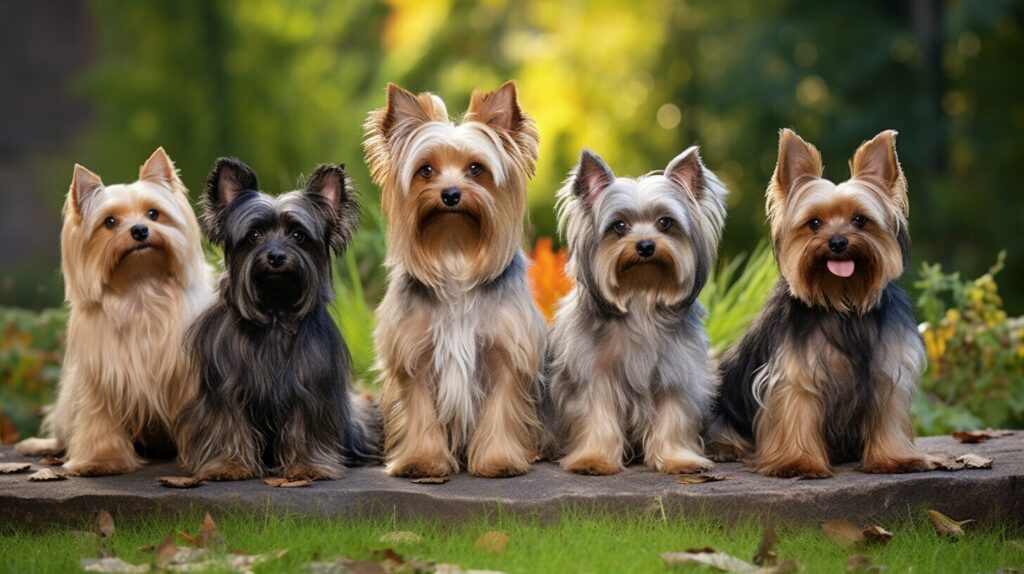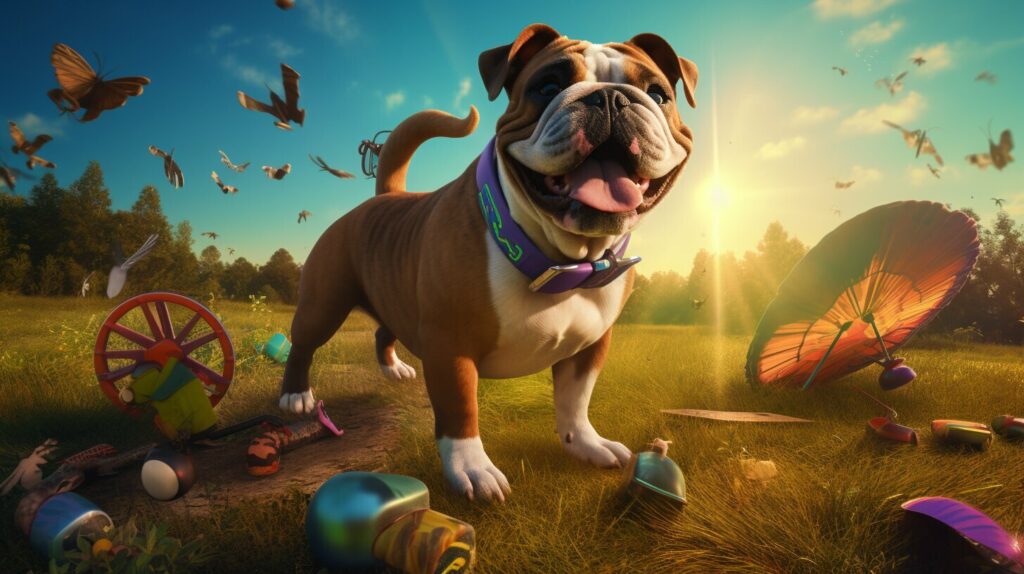Are you considering adopting a bully’s dog but unsure about what it entails? Do you want to know more about bully breeds, their characteristics, and how to care for them? Then you’ve come to the right place. This comprehensive guide provides all the information you need to know about bully’s dogs, including health considerations, temperament, training, and care needs.
Key Takeaways
- Bully’s dogs refer to a specific group of breeds, including American Pit Bull Terriers, American Staffordshire Terriers, and more.
- These dogs are known for their muscular build, short hair, and friendly nature towards humans.
- Bully’s dogs require proper socialization, exercise, and training to prevent undesirable or aggressive behavior.
- You should choose a bully breed based on your lifestyle and preferences, as different breeds have different energy levels and personality traits.
- When adopting a bully breed, you should look for responsible breeders or rescue organizations that prioritize the dog’s welfare.
What are Bully’s Dogs?
If you are interested in adopting a dog and have come across the term “bully breed dogs,” you may be wondering what exactly that means. Bully’s dogs are a group of breeds that share similar physical and behavioral characteristics. They are also sometimes referred to as “bully breed” or “bully dog breed.
The term “bully” can be misleading and has a negative connotation due to misinformed stereotypes. Contrary to popular belief, bully’s dogs are not inherently aggressive. In fact, many bully breeds are known for their affectionate and loyal personalities, making them excellent family pets.
Some of the most popular bully breed dogs include the American Pit Bull Terrier, the American Staffordshire Terrier, the Bull Terrier, and the Staffordshire Bull Terrier. Other breeds such as the Boxer, Bullmastiff, and Boston Terrier may also fall under the bully breed category.
Origins
Bully breed dogs were originally bred for various purposes, including hunting, guarding, and even as companions. Over time, they developed certain characteristics that made them well-suited for their particular jobs. For example, the American Pit Bull Terrier was bred for dog fighting and developed a muscular and agile body to excel in the ring.
Today, most bully breed dogs are kept as family pets and are known for their loyalty, protectiveness, and affectionate nature.
Bully Breed Characteristics
When it comes to bully’s dogs, understanding their characteristics is crucial to providing proper care and training. Here are some key traits that are common among bully breeds:
| Traits | Description |
|---|---|
| Size | Bully breeds range in size from medium to large, with some breeds weighing up to 100 pounds or more. |
| Appearance | Bully breeds have a muscular build and a distinctive, blocky head shape. Many have short, smooth coats. |
| Temperament | Bully breeds are known for their loyalty and affectionate nature toward their owners. They can also be strong-willed and stubborn at times. |
| Energy Level | Bully breeds tend to have high energy levels and require regular exercise to stay healthy and happy. |
| Intelligence | Bully breeds are intelligent and eager to please, but may require patient and consistent training methods to achieve desired behavior. |
It’s important to keep in mind that while these traits are common among bully’s dogs, each individual dog is unique and may exhibit slightly different characteristics. Proper socialization and training can help to shape a bully breed’s temperament and behavior.
Bully Breed Information
Bully’s dogs are often misunderstood and subject to negative stereotypes. However, it’s important to know the truth about this amazing breed.
One common misconception is that all bully’s dogs are aggressive. In reality, the breed is known for their gentle disposition and affectionate nature towards their human family members. They can also be highly social with proper training and socialization.
Another misconception is that bully’s dogs are all the same breed. In fact, there are several breeds that fall under the bully breed category, including the American Pit Bull Terrier, American Staffordshire Terrier, Bull Terrier, and Staffordshire Bull Terrier. Each breed has its own unique characteristics and personality traits.
Interestingly, bully breeds were originally bred for their strength and athletic ability, and were often used in blood sports such as bull-baiting and dog fighting. However, as these practices became illegal, responsible breeders began focusing on breeding bully’s dogs for their loyalty and companionship.
Today, bully’s dogs are among the most popular breeds in the United States. They are known for their loyalty, playfulness, and affectionate personalities. While they do require proper training and socialization, they can make wonderful family pets and provide years of love and companionship.
Bully Breed Health
Like all dogs, bully breeds require proper care to maintain their health and well-being. However, they may be predisposed to certain breed-specific health issues that you should be aware of.
| Common Health Issues | Description |
|---|---|
| Hip Dysplasia | A genetic condition that affects the hip joint and can cause pain and mobility issues. |
| Brachycephalic Syndrome | A respiratory condition that affects dogs with short snouts, such as bulldogs and pugs. |
| Skin Allergies | Bully breeds are prone to allergies, which can cause itchy skin, redness, and irritation. |
To help maintain your bully’s health, make sure they receive routine veterinary care, including vaccinations, parasite prevention, and regular check-ups. Additionally, prioritize proper nutrition and exercise to help prevent obesity and related health issues.
Bully breeds often require moderate exercise, such as daily walks or playtime in the yard. However, it’s important to avoid over-exerting them, especially in hot weather, which can lead to heatstroke.
Beyond physical health, it’s essential to prioritize your bully’s mental health as well. Socialization and mental stimulation are crucial for keeping a dog happy and mentally healthy.
In summary, taking care of a bully breed involves being aware of their potential health issues, providing proper nutrition and exercise, routine veterinary care, and prioritizing their mental health.
Bully Breed Temperament
Understanding the temperament of bully’s dogs is essential to ensuring they are well-adjusted and happy pets. These dogs are known for their loyalty, affection, and protective nature, but like any breed, they have their unique personality traits that require careful consideration.
When it comes to children, bully breeds are generally friendly and affectionate. However, interactions between dogs and kids should always be monitored to prevent any potential accidents. These dogs have a high prey drive, meaning they might chase small animals, so it’s best to keep them leashed during walks in public areas.
Proper socialization is crucial, as bully breeds can sometimes be wary of strangers or unfamiliar dogs. Early exposure to new people, places, and experiences can help prevent fear and aggression.
Some bully breeds have a strong protective instinct, which is one of the reasons why they were originally bred. However, this trait can be problematic if not properly managed. It’s important to provide your dog with proper training and socialization to ensure they are not overly aggressive or reactive in situations where there is no real threat.
Overall, bully breeds are known for their affectionate and loyal nature, but their unique personalities require careful consideration and training. With proper socialization and training, bully breeds can make excellent family pets.
Bully Breed Training
Training your bully’s dog is an essential part of responsible ownership. These dogs are intelligent and eager to please, making them relatively easy to train with positive reinforcement techniques.
Start training your bully’s dog as early as possible, preferably when they are still puppies. This will help them develop good habits and prevent the formation of bad ones. Consistency is essential in training, so establish a routine and stick to it.
Effective Training Methods
Positive reinforcement is the most effective training method for bully’s dogs. This technique involves rewarding your dog for good behavior with treats, praise, or toys. Punishing your dog for bad behavior, on the other hand, is not recommended, as it can lead to fear and anxiety.
Clicker training is a popular positive reinforcement technique that works well with bully’s dogs. This method involves using a clicker to signal the desired behavior, followed by a reward. With consistent use, your dog will learn to associate the clicker sound with positive reinforcement.
Obedience Training
Bully’s dogs are known for their stubbornness, which can sometimes make them challenging to train. Obedience training is a crucial part of addressing this issue and ensuring that your dog can follow basic commands.
Enrolling your bully’s dog in an obedience class is an excellent way to start their training. These classes provide professional guidance and socialization opportunities for your dog. Alternatively, you can also train your dog at home using online resources or books.
Addressing Behavioral Issues
Bully’s dogs can develop behavioral issues, just like any other dog. These problems can include aggression, separation anxiety, and destructiveness.
If your dog is exhibiting behavioral issues, it’s essential to address them promptly. Seek professional help from a qualified dog trainer or behaviorist. They can provide guidance on managing the issue and preventing it from reoccurring in the future.
Overall, with patience, consistency, and positive reinforcement, training your bully’s dog can be a rewarding experience for both you and your pet.
Bully Breed Care
Caring for a Bully’s dog requires attention to their exercise needs, grooming requirements, and feeding recommendations. Here are some tips to help you take care of your Bully breed:
Exercise Requirements
Bully’s dogs require regular exercise to maintain their physical and mental health. Depending on your dog’s age and energy levels, a daily walk or play session is recommended. Consider providing toys that challenge their minds and engage them physically, like puzzle feeders or tug-of-war ropes.
Grooming Needs
Bully’s dogs have short coats and don’t require excessive grooming. However, they do shed and will benefit from a weekly brushing to remove excess fur and dirt. Regular nail trimming and dental care are also essential for maintaining their overall health.
Feeding Recommendations
Bully’s dogs have specific dietary needs that should be addressed with your veterinarian. Generally, high-quality dry or wet food with a protein content between 18-22% and a fat content of 5-8% is recommended. Avoid overfeeding your dog to prevent obesity and related health issues.
Overall, caring for a Bully’s dog requires attention to their specific needs and a commitment to providing them with regular exercise, grooming, and a healthy diet.
How to Choose a Bully’s Dog
If you’re considering adding a bully’s dog to your family, it’s important to select the right one for your lifestyle and preferences. Here are some factors to consider:
Size
Bully breeds come in a range of sizes, from small to large. Consider the size of your home and yard, as well as your ability to handle a larger or smaller dog.
Energy Level
Think about your own activity level and how much exercise you can provide for your bully’s dog. Some breeds, like the American Pit Bull Terrier, require more exercise than others.
Personality Traits
Bully’s dogs have unique personalities and temperaments. Some are known for being great with children, while others may be more reserved or protective. Consider which traits you value most in a dog.
Breed-Specific Laws
It’s important to research any breed-specific laws or regulations in your area before selecting a bully’s dog. Some breeds may be restricted in certain cities or states.
When selecting a bully’s dog, make sure to visit the breeder or rescue organization in person and interact with the dog before making a decision. This will give you a good sense of their temperament and personality. Remember, choosing the right dog is a big commitment, so take the time to make an informed decision.
Finding a Responsible Bully’s Dog Breeder or Rescue
If you’ve decided to add a bully’s dog to your family, you have several options to find the right dog. You can choose to buy from a breeder or adopt from a rescue organization. However, it’s crucial to choose a responsible source to ensure that your new furry friend is healthy and well-cared for.
Choosing a Bully Dog Breeder
If you decide to buy from a breeder, research your options thoroughly. Look for breeders with a good reputation, who are registered with the American Kennel Club (AKC) or a similar organization. A reputable breeder should be willing to answer all your questions and provide you with health records and certifications.
Visit the breeder’s facility to see the living conditions of the dogs and meet the puppy’s parents. Ensure that the puppies are well-socialized and have been raised in a clean and healthy environment. Beware of breeders who prioritize profit over the well-being of their dogs and puppies.
Adopting from a Rescue Organization
If you decide to adopt a bully’s dog from a rescue organization, research the organization’s reputation and mission statement. Ensure that they prioritize the well-being of the dogs over profit. Check their reviews and ask for references. Reputable rescues will allow you to meet the dog before adoption and may even conduct a home visit to ensure that your home is safe for the dog.
When adopting from a rescue, be prepared for the possibility that the dog may have some behavioral or medical issues. However, a reputable rescue will be transparent about the dog’s health and behavior and provide you with all necessary information.
Final Thoughts
Whether you choose to buy from a breeder or adopt from a rescue, remember that owning a bully’s dog is a responsibility. Ensure that you have the time, resources, and commitment to provide your new furry friend with a loving home and proper care. By choosing a responsible source, you can ensure that your new furry friend is healthy, well-cared for, and a welcome addition to your family.
Conclusion
Congratulations! You have completed the comprehensive guide to understanding and caring for bully’s dogs. By now, you have learned about the various types of bully breeds, their physical characteristics, temperament, health, training, and care needs. Remember, bully’s dogs are loving and loyal companions, but they require responsible ownership.
It is crucial to understand that bully’s dogs are not inherently aggressive or dangerous, as some misconceptions may suggest. Their behavior is largely determined by their upbringing and training. By providing them with proper care, socialization, and positive reinforcement training, you can help ensure they become well-behaved and happy pets.
If you are considering adopting a bully’s dog, take the time to research and select a reputable breeder or rescue organization. Remember to consider factors such as energy levels, size, and personality when selecting the right bully breed for your lifestyle.
Thank you for taking the time to educate yourself on bully’s dogs. By sharing your knowledge and love for these wonderful pets, you can help break down stereotypes and promote responsible ownership.
FAQ
Q: What are bully’s dogs?
A: Bully’s dogs refer to a specific type of dog breed known for their robust build and muscular physique. They often have a square-shaped head and a strong jawline.
Q: What are the characteristics of bully’s dogs?
A: Bully’s dogs are known for their loyalty, intelligence, and protective nature. They are generally friendly and affectionate towards their owners and can be good with children when properly socialized.
Q: What health considerations should I be aware of for bully’s dogs?
A: Bully’s dogs may be prone to certain health issues such as hip dysplasia, skin allergies, and breathing difficulties. Regular exercise, a balanced diet, and routine veterinary check-ups are important for their overall well-being.
Q: How should I train a bully’s dog?
A: Training a bully’s dog requires consistency, positive reinforcement, and patience. It is important to establish clear boundaries and rules from an early age and provide them with mental and physical stimulation.
Q: What are the grooming requirements for bully’s dogs?
A: Bully’s dogs have short coats that are relatively low maintenance. Regular brushing, occasional baths, and routine nail trimming are usually sufficient to keep them looking and feeling their best.
Q: How do I choose the right bully’s dog for my lifestyle?
A: When selecting a bully’s dog, consider factors such as their size, energy levels, and temperament. It is important to choose a breed that aligns with your activity level and living situation.
Q: How can I find a responsible bully’s dog breeder or rescue?
A: When looking to adopt a bully’s dog, it is important to do thorough research and find a responsible breeder or rescue organization. Look for breeders who prioritize the health and well-being of their dogs and rescue organizations that follow ethical practices.



